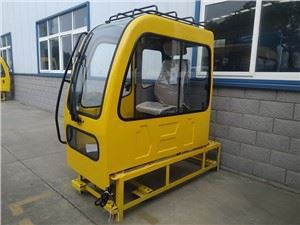Understanding Rush Refuse Systems: A Comprehensive Guide
The evolution of waste management has led to innovative solutions that prioritize efficiency and sustainability. One such innovation is the rush refuse system. These systems are designed to enhance the collection and processing of waste while minimizing environmental impact. In this article, we will explore what rush refuse systems are, how they work, their benefits, challenges, and practical applications in various contexts.
What are Rush Refuse Systems?
Rush refuse systems are advanced waste collection and processing systems that operate on streamlined methodologies, ensuring rapid and efficient handling of refuse. These systems utilize various technology-driven approaches to optimize waste management processes.
Key Components of Rush Refuse Systems
- Smart Containers: Equipped with sensors to monitor capacity and condition.
- Automated Collection Vehicles: Specialized trucks that can autonomously collect and transport waste.
- Data Analytics: Tools that analyze data for route optimization and collection schedules.
- Sorting Facilities: Advanced facilities that separate recyclables and non-recyclables efficiently.
The Importance of Rush Refuse Systems
With the increasing global population and urbanization, efficient waste management has never been more critical. Rush refuse systems not only help in managing refuse effectively but also play a vital role in promoting sustainability.
Societal Benefits
- Improved Public Health: Regular and efficient collection reduces exposure to hazardous waste.
- Environmental Protection: Minimizes landfill usage and promotes recycling.
- Job Creation: New technologies in waste management create job opportunities.
Economic Advantages
Adopting rush refuse systems can lead to significant cost savings for municipalities and businesses through optimized routes, reduced labor costs, and increased recycling revenue.
How Rush Refuse Systems Work
The functioning of rush refuse systems can be broken down into several key steps, starting with waste generation and ending with the final disposal or recycling of the collected waste.
Step-by-Step Process
1. Waste Generation
This initial stage involves the creation of waste by homes, businesses, and industries. Understanding waste types is crucial for efficient management.
2. Smart Collection
Smart bins equipped with IoT sensors can detect waste levels and alert collection services when they are nearly full. This proactive approach enhances efficiency.
3. Scheduled Collection
Through advanced data analytics, municipalities can optimize collection schedules based on historical data and real-time alerts, ensuring timely pickups.
4. Transportation
Automated vehicles equipped with GPS technology transport waste to sorting facilities. This step ensures that waste is handled swiftly and safely.
5. Sorting and Processing
Sorting facilities utilize machines to segregate recyclables from non-recyclables. This process is critical in maximizing recycling rates and minimizing landfill use.
6. Disposal or Recycling

Once sorted, recyclables are processed for reuse while non-recyclables are sent to landfills or incineration facilities, ensuring responsible waste disposal.
Practical Applications of Rush Refuse Systems
Rush refuse systems can be implemented in various environments, from urban areas to rural communities. Below are some practical examples.
Urban Environments
In cities, rush refuse systems can manage the high volume of waste generated daily. Smart bins placed throughout urban areas can automatically notify services for collection when they’re nearing capacity.
Commercial Establishments
Restaurants and malls can benefit from these systems. For instance, smart bins can help businesses manage waste better and reduce overflow issues that lead to negative customer experiences.
Rural Applications
In less populated areas, these systems can be tailored to optimize collection routes, reducing costs and improving service efficiency, particularly in communities with dispersed populations.
Challenges Facing Rush Refuse Systems
Despite their many advantages, implementing rush refuse systems can present several challenges.
Initial Costs
Investing in advanced technology and infrastructure can be expensive upfront, though long-term savings may outweigh these initial costs.

Public Awareness
Effective communication with the community regarding how to properly use these systems is crucial for success and maximizing participation.
Technological Hurdles
Ensuring that all components function correctly and are integrated efficiently can pose technical challenges, requiring skilled personnel and regular maintenance.
Case Studies: Successful Implementation of Rush Refuse Systems
Several municipalities and businesses have successfully adopted rush refuse systems, showcasing their benefits through real-world examples.
Case Study 1: San Francisco
San Francisco implemented smart trash and recycling bins throughout the city, leading to a drastic reduction in waste sent to landfills. The city’s recycling rate increased to over 80%, demonstrating the effectiveness of modern refuse systems.
Case Study 2: Amsterdam
Amsterdam has introduced automated collection vehicles for street cleaning and waste collection. These vehicles significantly reduced labor costs and improved efficiency, providing a model for other cities.
Tips for Implementing Rush Refuse Systems
If you’re considering adopting rush refuse systems, here are some practical tips to guide your implementation.
1. Assess Your Needs
Evaluate the amount and types of waste your organization generates to choose the right system.
2. Choose the Right Technology
Research and invest in technology that suits your specific operational needs and budget constraints.
3. Engage the Community
Develop an outreach program to educate citizens about the new system and its benefits to encourage participation.
4. Monitor and Adapt
Regularly analyze system performance and adjust operations based on collected data and feedback.
Future of Rush Refuse Systems
The future of rush refuse systems looks promising with advancements in technology, such as artificial intelligence and machine learning. These innovations can further enhance efficiency and sustainability in waste management.
Emerging Technologies

- AI Integration: AI can predict waste generation patterns to optimize collection routes.
- Blockchain: Can be used to enhance transparency and traceability in waste management processes.
Frequently Asked Questions (FAQs)
1. What types of waste can be managed with rush refuse systems?
Rush refuse systems can handle various waste types, including household trash, recyclables, and organic waste.
2. How can organizations reduce costs with rush refuse systems?
Organizations can save costs through optimized collection routes, reduced labor needs, and increased recycling options.
3. Are rush refuse systems suitable for small towns?
Yes, these systems can be tailored to suit the needs of small towns, optimizing routes and ensuring efficient waste management.
4. How can communities encourage recycling with these systems?
Communities can implement educational programs that inform residents about proper sorting and recycling practices.
5. What is the role of technology in rush refuse systems?
Technology plays a crucial role in monitoring waste levels, optimizing collection routes, and enhancing the sorting process, ensuring efficiency and sustainability.
6. Can rush refuse systems contribute to zero waste goals?
Yes, by improving recycling rates and reducing landfill use, rush refuse systems significantly contribute to achieving zero waste goals.
